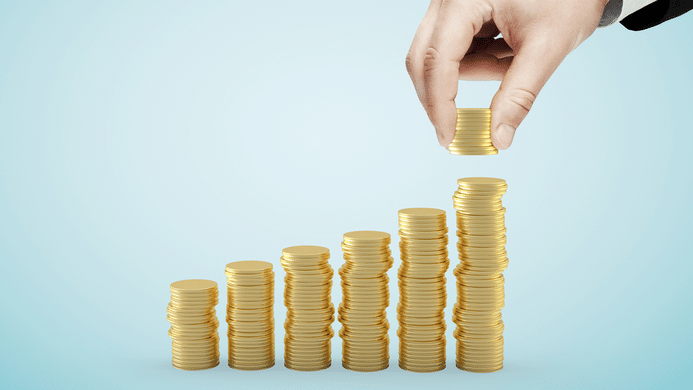ASX investors will frequently hear companies talk about EBITDA (Earnings Before Interest, Taxes, Depreciation and Amortisation) as well as its profit or loss. What is the difference between the two and why does it matter?
What is EBITDA?
It is a financial measure that is used to measure the profitability of a business before taking into account certain expenses that are not considered part of a business’ day to day operations – and, of course, taxes. Naturally, EBITDA will be higher than a company’s profit or loss because it excludes these items.
Is EBITDA reliable?
How you answer that question depends on whether or not you think the items EBITDA excludes distort true profitability. Whether or not you think depreciation, interest and taxes really should be accounted for in earnings.
It is true that depreciation is not a literal outflow of cash, but of course interest and tax will be. Granted, companies can reduce interest and tax in a number of ways, although if their impact is miniscule, you may wonder why the don’t just use Earnings Per Share or Net Profit. While depreciation and amortisation are not cash outflows when recorded, they represent a cost to the company that they’ll generally need to recoup later, in the form of assets declining in value. And in some instances, amortisation represents a sunk cost. Just ask IGO (ASX:IGO) which had to amortise the entire $1.3bn it paid for Western Areas (ASX:WSA) just 18 months earlier due to collapsed nickel prices.
The Yes Case
On one hand, the items EBITDA excludes are not related to the daily operating performance of a company. By looking at EBITDA, investors can get a better sense of how well a company is able to generate profits without considering financing costs (or balance sheet structure) and non-cash expenses, like depreciation and amortisation. Even though a company may not be NPAT profitable, EBITDA profitability may indicate that a company’s core operations are profitable.
You can also compare one company’s EBITDA to another, particularly companies in the same industry. Investors can make decisions about which company deserves their investment. Also, some companies release EBITDA for certain divisions and investors can use these figures to see which divisions are performing and which ones are not.
The No Case
The world’s most famous investor, Warren Buffett, despises companies that use EBITDA in their reporting – going to the point of pledging not to invest in companies that use it. He is critical because he believes that some companies may attempt to manipulate the numbers.
On one hand they could include one-time gains or other non-operating activities that artificially increase their earnings when times are good, but do the opposite when times are tough. Buffett’s late business partner, Charlie Munger, was even more scathing calling it ‘bullshit earnings’. And there are others, from professional fundies to WallStBets posters, who share a similar view.
Look at EBITDA in conjunction with other metrics
EBITDA is not a formal accounting metric, giving flexibility to the company to include or exclude what it wants and investors in favour of EBITDA will point out that depreciation and amortisation are not actual cash flows out of the company. Even so, they can still affect its long-term financial health as companies will have to replace the depreciating assets some day and this will be definitely be a cash outflow at that time.
High levels of depreciation or amortisation can not only indicate potentially high cash outflows down the track, but also poor management of assets. Warren Buffett is known for his long-term focus. He therefore prefers to use metrics that factor in taxes and non-cash expenses when assessing a company’s worthiness for investment.
What about EBIT? Or EBITDAX or EBITDAI?
Some investors may opt to use EBIT (Earnings Before Interest and Tax). EBIT would account for depreciation and amortisation, but not for the cost of debt financing (interest) and taxes. For companies without any borrowings, there may be little to no difference between EBIT and the Profit Before Tax (PBT) that is an accounting metric. But if a company does have borrowings, there may be a substantial difference. This is why it is important for investors to also look the balance sheet in conjunction with these numbers.
Some companies use their own metrics. Oil and gas company Santos (ASX:STO) uses EBITDAX, with the X standing for capex. Kiwi telco Spark (ASX:SPK) uses EBITDAI which excludes its net investment income. A company using a metric that may make it look worse than it is…who would’ve thought?
2 occasions when EBITDA is useful
So, is EBITDA a good or bad metric? In our view, the short answer is that it can be both and therefore should not be used in isolation as is the case with any other metric. In our view, it is most useful for two purposes. First, for comparing companies in the same sector. Second, for calculating takeover values of an M&A target, given the EV/EBITDA multiple is a commonly used approach to valuing M&A targets. One deal that used the target was Blackstone’s acquisition of Crown (ASX:CWN) in 2022, and it is one of many.
But sometimes it is not
From our standpoint, we would urge caution in using EBITDA for two specific purposes. First, to compare companies in the different sectors. Second, as a sole excuse to justify investing in a non-profitable company (i.e. one that is persistently bleeding cash and is only surviving with constant capital raisings). This is not to say that non-profitable companies cannot be good investments, but investors shouldn’t say a non-profitable company is a good investment simply because it has positive EBITDA.
In the end, we think it can be both a good and bad metric and it should therefore not be used in isolation.
What are the Best ASX Stocks to invest in right now?
Check our buy/sell tips
